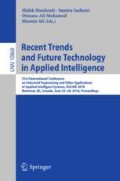Abstract
Dorsal hand recognition is a crucial topic in biometrics and human-machine interaction; however most of the identification systems identify and segment the hands from the images consisting of high contrast backgrounds. In other words, capturing and analyzing images of hands on a white or black or any colored background is way too easy to achieve high accuracy. On the contrary, in continuous authentication or in interactive human-machine systems, it can be not possible nor feasible to process high contrast images, like hands on computer keyboards which is not as simple as single color backgrounds even the feature to be extracted is solely the hand color. Therefore we deal with processing of the images consisting of hands on computer keyboards to compare various luminance and chrominance methods by YCbCr color space extraction and to find ways to achieve higher accuracy without any succeeding erosion, dilation or filtering. The methods focused on chromatic intervals could be summarized as: fixed intervals, covariance intervals and fuzzy 2-means. Our main contribution briefly is a necessary accuracy comparison and validation of the common methods on the single images. The highest accuracy is found as 96% by fuzzy 2-means applied to chrominance layers of the image.
Access this chapter
Tax calculation will be finalised at checkout
Purchases are for personal use only
References
Frolova, D., Stern, H., Berman, S.: Most probable longest common subsequence for recognition of gesture character input. IEEE Trans. Cybern. 43(3), 871–880 (2013)
Ghotkar, S., Kharate, G.K.: Vision based real time hand gesture recognition techniques for human computer interaction. Int. J. Comput. Appl. 70(16), 1–6 (2013)
Weber, H., Jung, C.R., Gelb, D.: Hand and object segmentation from RGB-D images for interaction with planar surfaces. In: 2015 IEEE International Conference on Image Processing (ICIP), pp. 2984–2988. IEEE (2015)
Feng, K.P., Wan, K., Luo, N.: Natural gesture recognition based on motion detection and skin color. Appl. Mech. Mater. 321, 974–979 (2013)
Plouffe, G., Cretu, A.M., Payeur, P.: Natural human-computer interaction using static and dynamic hand gestures. In: 2015 IEEE International Symposium on Haptic, Audio and Visual Environments and Games (HAVE), pp. 1–6. IEEE (2015)
Tu, Y.J., Kao, C.C., Lin, H.Y., Chang, C.C.: Face and gesture based human computer interaction. international journal of signal processing. Image Process. Patt. Recogn. 8(9), 219–228 (2015)
Alpar, O., Krejcar, O.: A new feature extraction in dorsal hand recognition by chromatic imaging. In: Nguyen, N.T., Tojo, S., Nguyen, L.M. (eds.) ACIIDS 2017. LNCS (LNAI), vol. 10192, pp. 266–275. Springer, Cham (2017). https://doi.org/10.1007/978-3-319-54430-4_26
Jeong, J., Jang, Y.: Max–min hand cropping method for robust hand region extraction in the image-based hand gesture recognition. Soft. Comput. 19(4), 815–818 (2015)
Chitra, S., Balakrishnan, G.: Comparative study for two color spaces HSCbCr and YCbCr in skin color detection. Appl. Math. Sci. 6(85), 4229–4238 (2012)
Kaur, A., Kranthi, B.V.: Comparison between YCbCr color space and CIELab color space for skin color segmentation. IJAIS 3(4), 30–33 (2012)
Qiu-yu, Z., Jun-chi, L., Mo-yi, Z., Hong-xiang, D., Lu, L.: Hand gesture segmentation method based on YCbCr color space and k-means clustering. Int. J. Sig. Process. Image Process. Patt. Recogn. 8(5), 105–116 (2015)
Shen, X.G., Wu, W.: An algorithm of lips secondary positioning and feature extraction based on YCbCr color space. In: International Conference on Advances in Mechanical Engineering and Industrial Informatics, pp. 1472–1478. Atlantis Press (2015)
Alpar, O., Krejcar, O.: Dorsal hand recognition through adaptive YCbCr imaging technique. In: Nguyen, N.-T., Manolopoulos, Y., Iliadis, L. (eds.) ICCCI 2016. LNCS (LNAI), vol. 9876, pp. 262–270. Springer, Cham (2016). https://doi.org/10.1007/978-3-319-45246-3_25
Alpar, O., Krejcar, O.: Fuzzy warning system against ulnar nerve entrapment. In: 2017 IEEE International Conference on Fuzzy Systems (FUZZ-IEEE). IEEE (2017)
Casati, J.P.B., Moraes, D.R., Rodrigues, E.L.L.: SFA: a human skin image database based on FERET and AR facial images. In: IX workshop de Visao Computational, Rio de Janeiro (2013)
Alpar, O., Krejcar, O.: Quantization and equalization of pseudocolor images in hand thermography. In: Rojas, I., Ortuño, F. (eds.) IWBBIO 2017. LNCS, vol. 10208, pp. 397–407. Springer, Cham (2017). https://doi.org/10.1007/978-3-319-56148-6_35
Alpar, O., Krejcar, O.: Superficial dorsal hand vein estimation. In: Rojas, I., Ortuño, F. (eds.) IWBBIO 2017. LNCS, vol. 10208, pp. 408–418. Springer, Cham (2017). https://doi.org/10.1007/978-3-319-56148-6_36
Acknowledgement
The work and the contribution were supported by the SPEV project “Smart Solutions in Ubiquitous Computing Environments 2018”, University of Hradec Kralove, Faculty of Informatics and Management, Czech Republic. We are also grateful for the support of Ph.D. student Ayca Kirimtat in consultations regarding application aspects.
Author information
Authors and Affiliations
Corresponding author
Editor information
Editors and Affiliations
Rights and permissions
Copyright information
© 2018 Springer International Publishing AG, part of Springer Nature
About this paper
Cite this paper
Alpar, O., Krejcar, O. (2018). A Comparative Study on Chrominance Based Methods in Dorsal Hand Recognition: Single Image Case. In: Mouhoub, M., Sadaoui, S., Ait Mohamed, O., Ali, M. (eds) Recent Trends and Future Technology in Applied Intelligence. IEA/AIE 2018. Lecture Notes in Computer Science(), vol 10868. Springer, Cham. https://doi.org/10.1007/978-3-319-92058-0_68
Download citation
DOI: https://doi.org/10.1007/978-3-319-92058-0_68
Published:
Publisher Name: Springer, Cham
Print ISBN: 978-3-319-92057-3
Online ISBN: 978-3-319-92058-0
eBook Packages: Computer ScienceComputer Science (R0)

